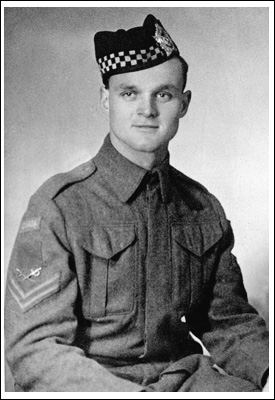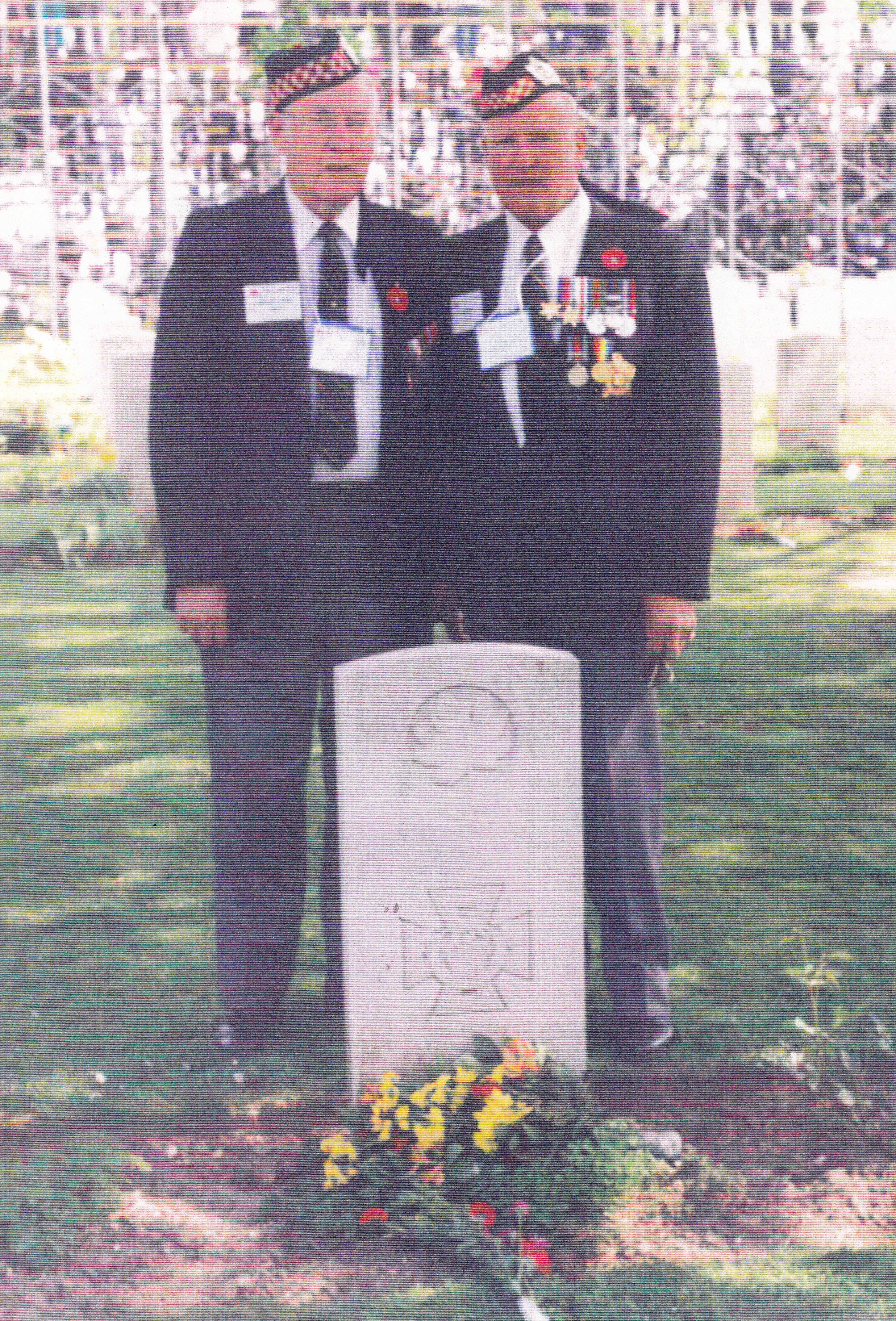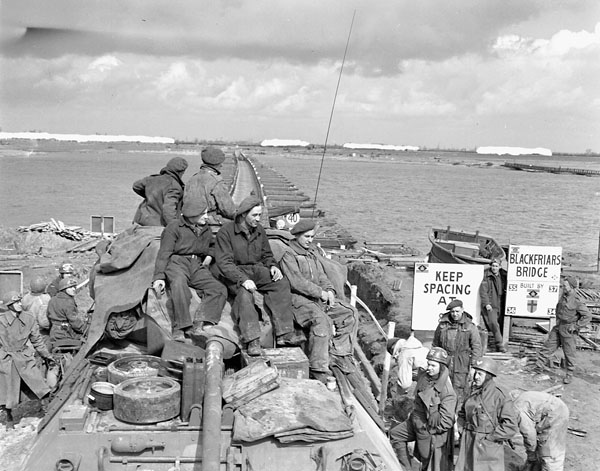Aubrey Cosens, railroad worker, soldier, war hero (born 21 May 1921 in Latchford, ON; died 26 February 1945 in Mooshof, Germany). During the Second World War, Cosens was awarded a posthumous Victoria Cross for his actions in leading his decimated platoon against the enemy. He was the only posthumous Canadian Army recipient of the Victoria Cross during the war.

Early Life
Aubrey Cosens was the son of Charles Edward and Yvonne Jean Cosens. The family moved to Porquis Junction near Iroquois Falls in northeastern Ontario shortly after his birth, where Charles Cosens worked for the Temiskaming and Northern Ontario Railroad. The family lived in a converted rail car, which was common for railway workers in northern Ontario at the time.
Yvonne Cosens developed cancer while Aubrey was a little boy. A neighbouring family, the Smiths, helped during her illness, and continued to take care of four-year-old Aubrey after her death in 1925. Dorothy Smith eventually became his foster mother. Cosens received his education at the Porquis Junction School but left school in 1938 to work with his father on the railroad.
When the Smiths moved to Timmins, Cosens went with them, although his father visited him when possible. Cosens continued to work for the railroad but also played sports, especially hockey.
Military Service
Aubrey Cosens attempted to join the Royal Canadian Air Force in 1939 but was rejected because he did not have his school reports with him. On 12 November 1940, he enlisted in the Argyll and Sutherland Highlanders of Canada (Princess Louise’s), an infantry battalion. Cosens served with the Highlanders on garrison duty in Jamaica from September 1941 to May 1943.
Cosens sailed with his unit to Britain in July and was promoted corporal on 19 November. On 1 August 1944, he was posted to the Queen’s Own Rifles of Canada (QOR) as a reinforcement during the tough battles in Normandy following D-Day. The QOR was part of 8th Brigade, 3rd Canadian Infantry Division, II Canadian Corps. Cosens was made acting sergeant on 1 November 1944 and confirmed in rank on 2 February 1945.

Battle of the Rhineland
Operation Blockbuster was the second phase of First Canadian Army’s battle to clear the Germans from the Rhineland in February 1945. (See Canada and the Rhineland Offensive.) The attack started along the road running between Goch and Calcar, while the final objective was an advance through the Hochwald Gap to the Rhine River.
Within II Canadian Corps, 3rd Division attacked on the right, with its 8th Brigade also on the right. Contrary to the usual formation adopted during brigade attacks of “two up, one back,” all three battalions of 8th Brigade attacked in line, although at different times. The QOR was on the brigade’s left and had Sherman tanks of C Squadron, 1st Hussars, in support.
After an opening artillery barrage from 1,034 guns, the QOR advanced first at 4:40 a.m. on 26 February. The battalion moved through open, muddy fields to secure the lower slopes of a horseshoe-shaped ridge. They faced tough, well-armed German paratroopers, who occupied a forward defensive line of reinforced concrete positions and fortified farmhouses. Behind them, secondary positions consisted of slit trenches, tank ditches and minefields.
The QOR’s objectives were the small farming hamlets of Mooshof, Wimmershof and Steeg. The unit advanced in the standard battalion attack pattern of “two up, two back.” D Company was on the left and had been assigned the capture of Mooshof. Its commander was Major Ben Dunkelman, who later chronicled his experiences in the book Dual Allegiance.
Battle for Mooshof
At Mooshof, the Germans had prepared defensive positions throughout the area and strong points in three farm buildings. With the support of two Shermans, Aubrey Cosens’s 16 Platoon, under Lieutenant Lloyd McKay, attacked the Germans in the farm buildings.
McKay and his men were beaten back twice and then counterattacked by the enemy. McKay was seriously wounded, while others were killed and several more wounded. Only Cosens and four other soldiers were fit to fight. Cosens immediately assumed command.
Cosens directed the other survivors to positions to provide covering fire. He then ran across open ground through heavy mortar and artillery fire to a nearby tank. Ignoring enemy fire, he climbed onto the Sherman and directed its fire against German positions.
After the small Canadian force beat off another German counterattack, Cosens ordered the tank to attack the farm buildings, while he and the other four soldiers followed it. The tank rammed the first building, which Cosens then entered alone. He killed several Germans and took the rest prisoner.
Cosens entered the second building and found it empty. He went into the third, a heavily defended two-storey farmhouse, while under heavy small arms and machine-gun fire. Cosens single-handedly killed or captured all the occupants and ordered his men to take up defensive positions. He then left to report the situation to Major Dunkelman. He had only moved a couple of metres, however, when a German sniper shot him through the head, killing him instantly.
After more tough fighting, the QOR took its objectives by midafternoon. For his courage in contributing to that hard-won victory, Cosens was awarded a posthumous Victoria Cross.
After his death, Cosens was originally buried in Germany. In September 1945, his body was reinterred in the Groesbeek Canadian War Cemetery in the Netherlands, near Nijmegen.

Memory
The Aubrey Cosens VC passenger steamer operated on Lake Temagami between 1945 and 1966. A Province of Ontario Heritage Plaque in Cosens’s honour was erected in Porquis Junction in 1965. In 1986, the government of Ontario named a bridge over the Montreal River on Highway 11 in Latchford the Sgt. Aubrey Cosens V.C. Memorial Bridge. The same year, a plaque commemorating him was dedicated in Latchford’s Veteran’s Park.
Royal Canadian Legion Branch 629 in Latchford is named after him. In May 2005, a plaque in Cosens’s honour was unveiled at Mooshof to replace an earlier one. On 26 February 2024, the QOR Museum transferred Cosens’s Victoria Cross to the Canadian War Museum.

 Share on Facebook
Share on Facebook Share on X
Share on X Share by Email
Share by Email Share on Google Classroom
Share on Google Classroom






